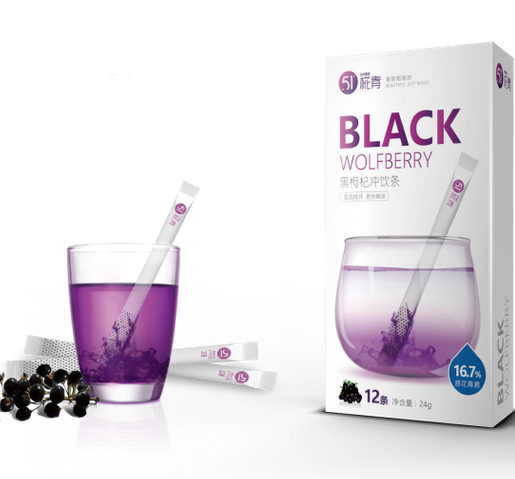The strengthening of the spring management of open field strawberries is the key to promoting early fruits, high quality and high yields. The measures are as follows: When the average temperature on the day when the temperature of the cold weather cover is stabilized is about 10°C, the cold-proof cover on the strawberry seedlings can be gradually removed. Be careful not to break flower buds. If the film is covered, when the film is uncovered, it is necessary to do a good job of hardening seedlings to prevent the sudden temperature difference from being too large and affect the growth and development of the strawberries. When the old leaves are removed in time, the cultivars should be cultivated and weeded in time, but the cultivator should be shallow, and prevent the soil blocks from pressing down the seedlings, and the drains should be cleared. At the same time, the old leaves, dead leaves, and diseased leaves of the strawberries should be preserved. Clear out to prevent transmission. Fertility promotes early-onset after a winter dormancy. After spring, the temperature rises and the strawberry begins to grow. Applying fertilizer in time can promote the early growth of the plant, form new leaves as soon as possible, increase the number of effective flowers, and increase the fruit setting rate. Because strawberry roots are shallow and sensitive to fertilizers, they are prone to fertilizer damage. To prevent the use of ammonium bicarbonate, urea, compound fertilizer, or human waste should be used. The amount of use should be controlled with 5-6 kg of urea per mu, 2000-2500 kg of human waste, 10-15 kg of compound fertilizer, and watering with fertilizer once. During the flowering period, spraying 0.2% potassium dihydrogen phosphate solution on the leaf surface for 1-2 times has a good effect on improving quality and increasing yield. Watering should be done with little water and keep the land moist. After entering the fruit mature, appropriate water control. During the drought, small water should be poured every evening after the fruit is harvested. Do not flood with water, otherwise it is easy to infect the disease and cause a lot of rot. After flowering and fruiting, the new stems of strawberry are inoculated with inflorescences. Generally, there are 10-30 flowers in each inflorescence, too many flower buds, insufficient supply of nutrients, weak growth, small fruit and malformed fruit will increase. Therefore, after budding, thin and thin flower buds should be sparse, and another sparse flowering period should be carried out during the full flowering period so that the nutrition will be concentrated to supply large flowers, the fruit setting rate and fruit weight will be increased, and the buds will be sparsely flowered. Each plant will retain 2-3 inflorescences. Inflorescence leaves 3-5 fruit. After fruit set and strawberry harvested, as the fruit increases, the ear drops, should be promptly placed under the ear with wheat straw, prevent fruit from contact with the ground pollution or rotten fruit. When the fruit's fruit surface 2/3 is colored, harvest it in time and harvest it in the morning after the dew is dry. When picking, do not touch the pulp. Gently pinch the handle and bring a part of the handle to the cleaning container. , Graded, sold or processed immediately. Prevention and control of pests and diseases Strawberry plants are dwarf and grow on the ground, and fruiting time is long. Fruits are easily exposed to the ground and are vulnerable to pests and diseases. Integrated control measures must be adopted. Diseases and pests mainly include: viral diseases, powdery mildew, gray mold, brown spot disease, and underground insect pests such as mites. 1. Viral disease. The fundamental measure is the use of virus-free vaccines to eradicate aphids. At the beginning of the disease, 1.5% of the diseased planting emulsion was sprayed with 1000 times or 83% of the potentiator was sprayed with 100 times. 2. Powdery mildew. Use 12.5% ​​of Myclobutanil 2000x or 20% Trifenin Wettable 1000x. 3. Gray mold. Use 50% nongrilled 800 times wettable powder or 50% quickan wettable powder 1000 times. 4. Brown spot. Use 2% agricultural anti-120 water 200 times or 50% thiophanate 500-1000 times. 5. Locusts. Use 50% anti-inferiority WP 2000 times solution or 10% imidacloprid wettable powder 1500-2000 times solution. 6. Underground pests. Such as lotus root, lotus root, 80% trichlorfon 200-250 grams per mu or 200-300 grams of 40% phoxim EC, water 500-750 kg irrigation or irrigation control. Note that the use of drugs should be stopped 15 days before fruit picking to prevent poisoning.
Health care or healthcare is the maintenance or improvement of health via the prevention, diagnosis, and treatment of disease, illness, injury, and other physical and mental impairments in human beings. Healthcare is delivered by health professionals (providers or practitioners) in allied health fields. Physicians and physician associates are a part of these health professionals. Dentistry, midwifery, nursing, medicine, optometry, audiology, pharmacy, psychology, occupational therapy, physical therapy and other health professions are all part of healthcare. It includes work done in providing primary care, secondary care, and tertiary care, as well as in public health.

Health Care Products
Dried Red Goji Berries,Lycium Barbarum Shrub,Purple Dry Berries,Superfood Goji Berries
Jiangxi Institute of Biological Products Inc. , http://www.jxinstitute.com
